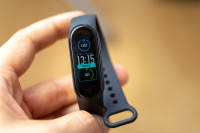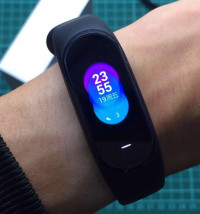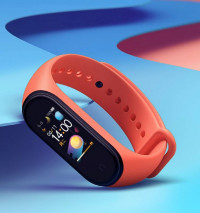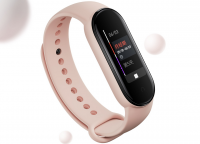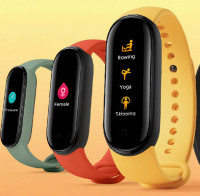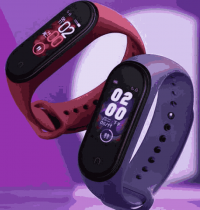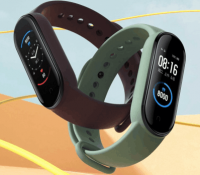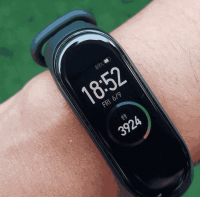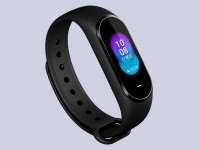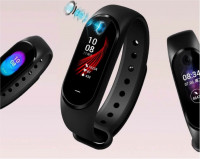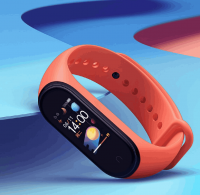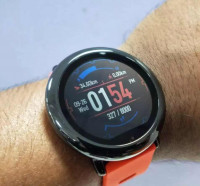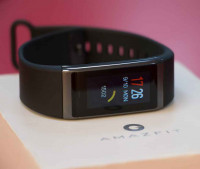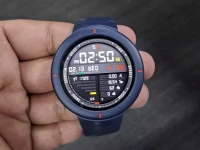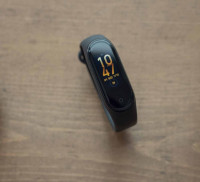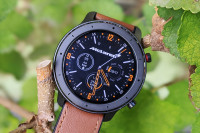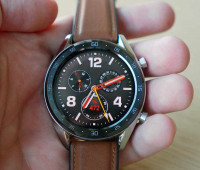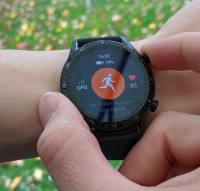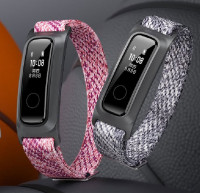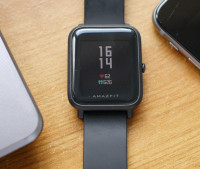Amazfit T-Rex review
OUR VERDICT
The Amazfit T-Rex offers a whole lot of outdoor watch for your money. Sports tracking is solid overall, and it delivers on the promise of big battery life. If you don’t want to spend big on something to go hiking with and can live with the slightly cheap-feeling build, there’s plenty to like about this watch with the dino name.
+FOR
Decent battery life
Solid sports tracking
Good value
-AGAINST
A bit chunky
Screen can get smudgy
No mapping
The Amazfit T-Rex is the company’s first sports watch that’s built for the outdoors. With the promise of military-grade durability and big battery life, it can track activities like trail running and open water swimming. It will track those and more for a lot less than it costs to buy an outdoor watch from the likes of Garmin and Suunto.
It joins a rapidly expanding family of Amazfit watches built by Huami, the Chinese brand also responsible for building Xiaomi’s Mi Band fitness trackers. With the T-Rex, the ambition is clear; Huami wants a piece of the outdoor watch action. At a sub-$140/£130 price point, it has every chance of doing that.
Away from its sports watch skills, the T-Rex also serves up smartwatch staples, like viewing notifications and switching up watch faces, to make it useful to have on your wrist when you’re not climbing up the side of a mountain.
There’s definitely room for an affordable outdoor watch, with the likes of the Garmin Instinct along with Suunto’s rugged options still coming in at a significantly higher price. The T-Rex - on paper - has the features to make it a pretty formidable adventure companion.
Amazfit T-Rex release date and price
Out now
Costs $139.90 (around £110, AU$200)
The Amazfit T-Rex was announced in January 2020 at Amazfit’s CES press conference and went on sale on January 9.
If you want this watch on your wrist, it’s priced at a very affordable $139.90 (around £110, AU$200), putting it above the Amazfit Bip S in pricing terms, but roughly in line with the Apple Watch look-alike the Amazfit GTS.
That price tag also puts it well below the price of Garmin’s Instinct, the cheapest outdoor option in Garmin’s stable of watches. It’s also significantly cheaper than Suunto’s Traverse and Ambit outdoor watches, which have been serving outdoor lovers for a good few years now.
Design
Chunky but feels toy-like
Built to military standards
Water-resistant to 50 meters
The T-Rex is built to withstand some serious rough and tumble, and that’s exactly what it looks like when you get it out of the box.
What you’ll find is a chunky 47mm watch that measures in at 13.5mm thick, but somehow just feels bulkier than that. Those dimensions suggest you’re getting a watch that matches the size and stature of a Garmin Fenix 6, though it’s clear the Garmin watch carries that heft in a much nicer way.
The Garmin is of course in an entirely different price bracket, and while the T-Rex feels a little bit chunkier than we’d like, it certainly doesn’t weigh heavy on your wrist. At 58g (including the strap and polymer case) you’re getting something that’s very light to wear.
We’re used to praising watches that keep the weight down, but we’d almost prefer a few more grams here. The Amazfit T-Rex is almost toy-like in its lightness with the absence of more high-grade materials.
The look is clearly inspired by the Garmins and Suuntos of this world. There’s a big raised bezel that surrounds the touchscreen display, along with four textured physical buttons that make them easier to locate and press with a pair of gloves on, while those visible screws are a sign of its rugged build.
Huami says the T-Rex is built to military standards, so it can withstand freezing temperatures and extremely humid ones. It has also been slapped with a waterproof rating that means you can take it swimming up to 50 meters deep.
If you care about colors, you can snap the Amazfit T-Rex up in five different shades. There’s gun grey, rock black (the one we tested), camo green, khaki, and army green. All come with the same silicone watch strap, which is very soft and extremely stretchy, and felt fine to wear day and night and during sweaty workouts.
Display
1.3-inch 360 x 360 AMOLED screen
Bright and high-quality
Gets smudged easily
At the heart of the T-Rex is a 1.3-inch, 360 x 360 resolution AMOLED touchscreen. The biggest Samsung Galaxy Watch model offers the same size and resolution, so you’re getting a similar quality display on a watch that costs around half the price.
It’s also up there with Samsung’s in terms of vibrancy and offering a nice pop of color on those data screens. The viewing angles are strong as well, particularly when you just need to quickly glance down at it on a treadmill or out on a run.
Brightness is strong too, even at auto brightness, which is invariably kinder on the battery life. If you want to go to the max though for those night-time adventures, there’s plenty of luminance for your activities.
To up the durability stakes, you’re also getting added protection with Gorilla Glass 3, and the T-Rex has an anti-fingerprint coating, though we did find the screen still managed to get quite smudged up between workouts.
Fitness
Includes reliable GPS and heart rate monitoring
Sleep tracking also seemed accurate
14 different sport modes
The Amazfit T-Rex has pretty much everything you’d expect to find on a sports watch. There’s built-in GPS, a heart rate monitor, the sensors to track activities indoors along with additional outdoor metrics, and there’s swim tracking support too.
There are 14 sport modes in total and that includes core sports like running, cycling, pool swimming, and indoor cycling. For outdoor lovers, it also has dedicated modes for the likes of hiking, skiing, open water swimming, and tracking triathlons.
Accessing these modes is done by pressing the top right button on the watch and then swiping on the touchscreen to find the sport you want to track.
All profiles offer some basic settings, letting you set workout goals based on things like mileage, time or calories. You can also set up alerts for aspects like hitting certain distances or a heart rate zone. Plus you can turn on real-time graphs based on metrics like pace and heart rate.
As a sports watch, it holds up surprisingly well. GPS pick-up time for outdoor activities was about the same as Garmin and Suunto sports watches we tested it against. Though there was one occasion where the GPS signal dropped out for a few seconds during a workout. Notably there's also no on-watch mapping or navigation.
The data itself was easy to absorb and on the whole reliable. During a run for instance, it gives you a nice summary of your activity so far when you’ve hit another mile or kilometer. While it’s a bit fiddly to review data on the watch, there’s a much nicer breakdown waiting for you inside the companion phone app.
There is an optical heart rate monitor here too that’s used to offer on the spot measurements, showing your resting heart rate to give you an insight into your current state of fitness.
It’s also put to use for measuring effort levels during workouts. It’s fair to say performance puts it within the category of most other wrist-based heart rate sensors, which are generally good for most activities, but falter for high intensity workouts like interval running and cycling sessions.
Compared to a heart rate monitor chest strap, the T-Rex tended to be slow to pick up elevated and dropping heart rate, and often posted higher readings. Those readings weren’t erratically high, but noticeable enough that the chest strap felt more reliable.
The Amazfit T-Rex also doubles up as a fitness tracker, though those features definitely play second fiddle to its sports tracking abilities. There’s a dedicated watch screen to view tracker staples like step counts, which was generally within 100-200 steps of the Garmin fitness tracker we tested it against.
It also monitors sleep, automatically giving you a sleep score, a breakdown of sleep, and sleep quality insights, which weren’t ground-breaking in terms of what they suggested, but it was nice to see them nonetheless.
From an accuracy point of view, the Amazfit T-Rex tended to offer data very close to what we measured with the Withings Sleep bed monitor. It regularly identified the right sleep duration, time taken to fall asleep, and also offered similar sleep scores.
Software
Runs Huami's own operating system
Smartwatch features are basic
Companion apps is useful but cluttered
Amazfit uses its own operating system to run the software show and it feels very like the Tizen OS used by Samsung in its appearance. From the main watch screen you’re a swipe away from your notifications, checking your step counts, and the settings menu. It keeps things basic, there’s no steep learning curve and it’s easy to get to grips with.
Smartwatch features are kept to a minimum. Notification support works for both Android and iPhones, though it’s very basic, as you can see the notifications for apps like WhatsApp or calendar appointments, but there's no way to act on them.
There’s also no music player, payment support or app support to speak of here. Though that’s hardly surprising given the price.
If you want to do some tinkering or see what else the T-Rex is capable of, you’ll need to head over to the Amazfit companion phone app. It’s here that you can do things like change watch faces, set up notification support, and check in on health and fitness data that you can’t view on the watch, such as sleep data and resting heart rate measurements.
It’s not the best looking of apps. It offers a place to drill deeper into data, track activities from your phone, and change your watch settings, but it could definitely do with better organizing and separating of those elements.
It would also be nice if something like changing watch faces and setting alarms could be done on the Amazfit T-Rex itself. While not a deal-breaker, we were very disappointed not to see a single dinosaur-related watch face here either.
If you want to steer clear of the app entirely and you’re only interested in poring over your sports data, the app does let you connect to Strava too.
Battery life
Lasts up to 20 days with all features active
If you use a lot of GPS that drops to more like a week
Huami has made offering big battery life a big deal and it’s no different with the T-Rex. The company has also broken down very precisely how you can achieve that great staying power.
There’s a 390mAh capacity battery that should deliver 20 days of life in what Huami calls ‘Daily’ mode. That’s when heart rate monitoring is set to always on, you’re tracking sleep, pushing 150 messages to the screen daily, raising your wrist 30 times to wake the screen each day, and, using the GPS for 13 minutes a day.
In ‘Basic’ watch mode, which means not being connected to your phone via Bluetooth, you can expect 66 days. When you’re continuously using GPS to track activities, it should manage 20 hours.
What we found day-to-day was that when not using sports tracking, battery drop-off tended to be around 10% a day. Tracking a 30-minute run knocked the battery by about 10%, and a 30-minute swim dented the battery by about the same.
It’s clear you’re definitely getting more than just a handful of days, but getting those 20 days with regular use of GPS-based sports tracking sounds a bit ambitious. You should comfortably getting a week or more unless you're a very heavy user, but you’ll need to be more sparing with some of the power-sapping features to get 20 days based on our time with it.
When you do need to power back up, there’s a proprietary charging cable that magnetically clips onto the back of the Amazfit T-Rex. It holds a good connection with the watch and will charge from 0%-100% in about two hours. So it’s not the speediest.
The Amazfit T-Rex is a surprisingly solid outdoor watch debut from Huami. It’s cheap, delivers a design that’s built for some rough and tumble, and covers those key sport modes.
Tracking is reliable on the whole, the battery lives up to its impressive billing, and while smartwatch features are limited, they do generally work well.
There are some outdoor watch staples it does miss out on, like navigation and mapping. But if you can live without those features and simply want some outdoor data and insights for your adventures, then it has got you covered.
Who’s this for?
The Amazfit T-Rex is for anyone who spends lots of time hiking or trail running, but can’t stomach spending hundreds on a watch to track those outdoor pursuits.
You’re getting some of the same metrics that you get on high-end Garmin and Suunto outdoor watches, and even outdoor smartwatches like the Casio Pro Trek WSD-F30. Unlike the latter, you’re also getting lots of battery life to play with.
Should you buy it?
Buy it if you like the idea of owning an outdoor watch that won’t break the bank. While the Amazfit T-Rex's design feels a little on the cheap side, its tracking skills perform well and it’s an easy to use watch overall.
If you want something with a better design that can offer similar tracking but can also add navigation into the mix, Garmin’s Instinct will be a better fit. The Instinct does though cost substantially more. Bottom line, there are few outdoor watches at this price that can really match the T-Rex right now.
